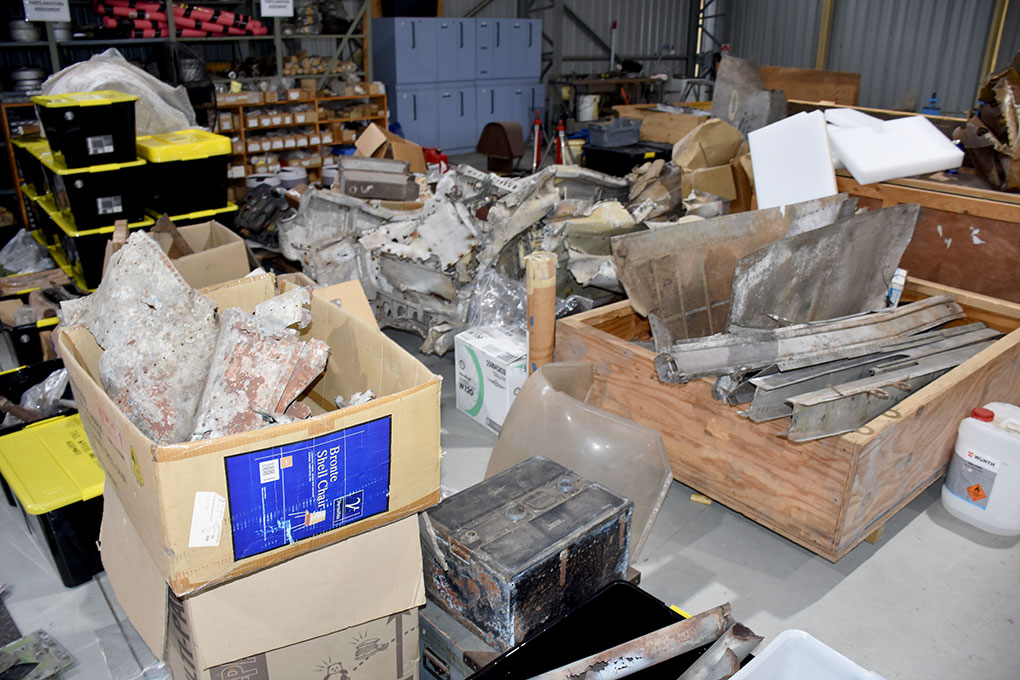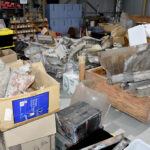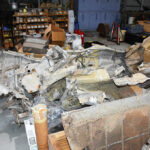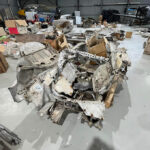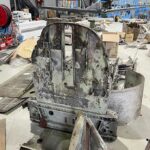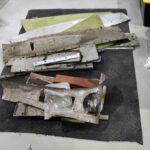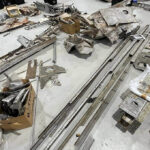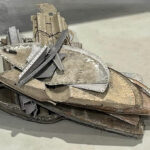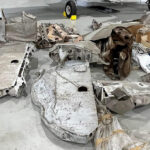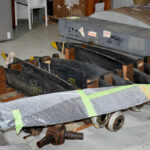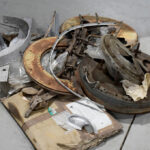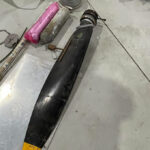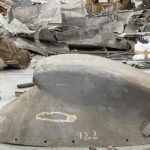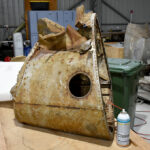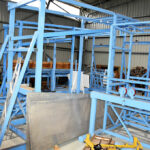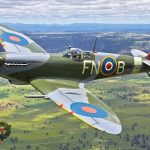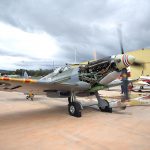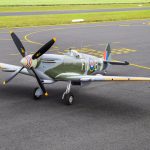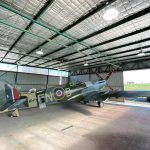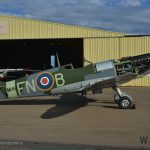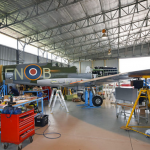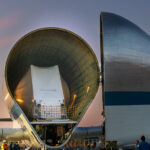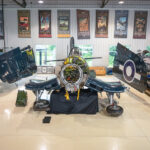For the past few years, our good friend John Parker at Warbirds Online has been following several important restorations at Vintage Fighter Restorations (VFR), a division of Pay’s Aviation in Scone, New South Wales, Australia. Here is his latest report on progress with a pair of Supermarine Spitfire Mk.Vs!
Scone Spitfire Mk.V Restorations – July, 2022
by John Parker
With VFR’s recent completion and first flight of Supermarine Spitfire Mk.IX MH603 at Scone, their attention has now turned to increasing the pace on the previously reported restoration of two Spitfire Mk.Vc’s (BS164 ex-RAAF A58-63 and MA353 ex-RAAF A58-232).
Recently, VFR brought all of the components from these two aircraft and the other holdings of relevant parts they have out of storage and laid them on the hangar floor to begin the process of parts inventory, identifying what is reusable for the restorations moving forwards. Interestingly, the parts cache includes a substantial amount of original material, including most of the structure, recovered from each aircraft’s WWII crash site, however much of it has suffered significant damage – both from the original impact and the subsequent decades of exposure to the elements. Even so, many parts will be in good enough condition to salvage and recondition for use in the restorations. The process of identifying each of these parts is a time-consuming task, of course, but vital to ensure as much originality as possible in the final product.
As previously reported, F.Mk.Vc A58-63 was the personal mount of Squadron Leader E M “Bill” Gibbs; the fuselage from this aircraft will be the first one mounted in the restoration jig. From here, the fuselage rebuild will follow the well-travelled pathway of previous Spitfire rebuilds at Scone, beginning with the installation of each fuselage frame in the jig, then the stringers and other structural components. The restoration team must pursue this process with exacting standards to ensure that the fuselage is both straight and structurally sound.
Spitfires Mk.I through Mk.V have many structural similarities, broadly speaking, to other Spitfires. The early marques, sometimes referred to as “short nose” variants due to the shorter models of Rolls-Royce Merlin fitted, have a fuselage structure from frame five (the firewall/main spar carry through point) on back with enough dimensional similarity to later models that VFR can reuse the same fuselage jigs from their previous Mk.VIII and Mk.IX restorations for these Mk.Vc’s; this will save a lot of time, not to mention money on these projects.
Once A58-63’s fuselage frame structure is assembled in the jig, then all of the skins can be formed and riveted in place. The team will then be able to fit of all the aircraft’s systems (hydraulic, electrical and fuel). Following that, the cockpit fit-out will take place; this will include the installation of items such as the instrument panel, controls, gunsight, seat and, finally, the canopy and windscreen.
The wings and tail groups will then be rebuilt to finish the aircraft’s assembly. While every restoration involves its own unique set of complications, so it’s hard to accurately predict a completion date, based upon their previous experiences with Spitfires, VFR estimates that A58-63 should be ready to fly in around four years.
We will continue to monitor the work on both of these highly significant Spitfires; they are extremely rare RAAF examples and will become significant additions on Australia’s warbird circuit.
In addition to the Mk.V’s, Vintage Fighter Restorations is well advanced with the restoration/modification of their the two-seat Spitfire Mk.IX. Once it flies, it will join the Pays Aviation/ VFR fleet of active warbirds at Scone. While they have no set completion date for this aircraft, it should fly in the not-too-distant future. It will then become the first two-seater to operate in Australia, providing aviation enthusiasts their first opportunity to fly in the type!
Work has also commenced on the very special project for the Hunter Fighter Collection, this being the airworthy restoration of Spitfire Mk.I X4009 which Australia’s Battle of Britain Ace, Pat Hughes, flew regularly – including on his final, tragic sortie. Initial work on this Spitfire has commenced at Airframe Assemblies on the Isle of Wight, after which the project will move to Scone. This Spitfire will serve as a flying memorial to Pat Hughes and the other brave Australian pilots who flew in the Battle of Britain.
John Parker and Warbirds Online would like to thank Ross Pay and the team at Pays Aviation and Vintage Fighter Restorations for their help in the preparation of this article and for allowing us access to these fantastic Spitfire restorations in Scone.
Many thanks indeed to John Parker for this article – we can’t wait to see how these amazing projects come together over the next few years.







